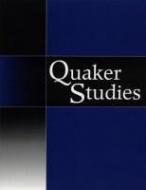
Abstract
The theology and lifestyle that grew from Friends' transforming experience of'primitive Christianity revived' differed from the dominant culture, exacting a high cost. Relying on early Friends' writing, this article examines how this new paradigm was transmitted. Friends summarized the basis of their faith with the phrase 'Christ is come to teach his people himself' (Benson 1968: 36; 1976: 3; Cooper 1990: 2; Freiday 1984: 4; Grundy 2002b: 11-13, 15, 17). In the 1650s and 1660s most people who became Friends were first worked on internally by the Holy Spirit. When they heard a Quaker preach, the words reached to the witness of God already working in them. This was often followed with some intense personal ministry. There might be no more contact until a different Friend came through the area and clinched the convincement. It was always clear that new Friends, as well as more experienced ones, were to be taken to the feet of Christ and left there to learn from the Teacher himself The broad statements of early Quaker faith made in this article should be familiar to students of Quaker history and theology. A sampling of secondary references is included for readers who would like to browse more widely. Many others could be added.
Recommended Citation
Grundy, Martha Paxson
(2007)
"Learning to Be Quaker: Spiritual Formation and Religious Education among Early Friends,"
Quaker Studies: Vol. 11:
Iss.
2, Article 2.
Available at:
https://digitalcommons.georgefox.edu/quakerstudies/vol11/iss2/2
